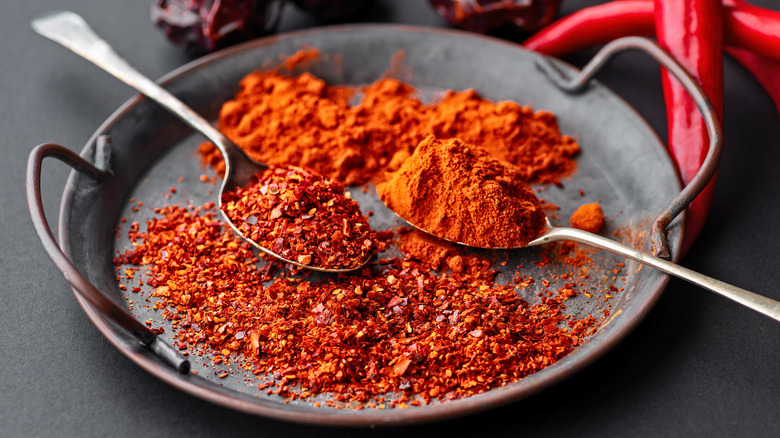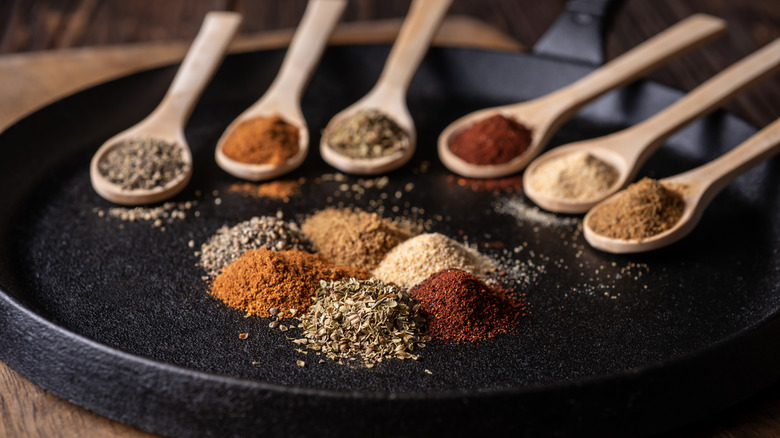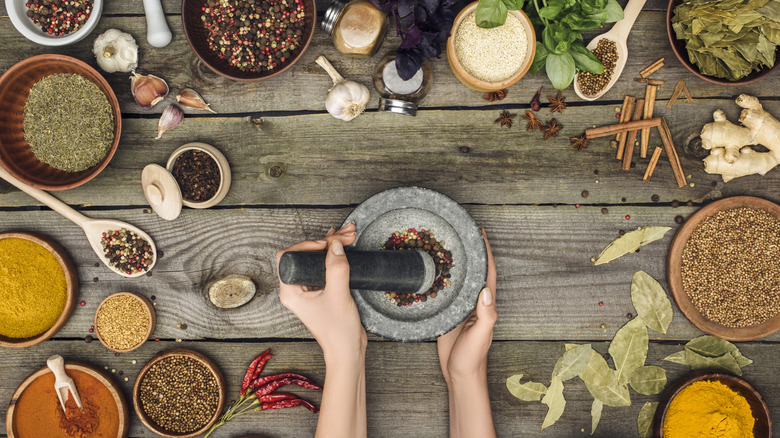What's The Point Of Toasting Spices Anyway?
Spices enhance not just a dish's taste, but also its smell. Walking into a kitchen wafting with aromatic spices is an adventure for the senses. Oftentimes, however, adding spices to food results in mild, subtle tones instead of bright, fragrant ones. The secret to robust spices is simple: toasting.
Toasting spices brings out both their aroma and enhances their flavor profile. While this may seem like just an extra step, it's both quick and effective, yielding results within only a few minutes. When a recipe calls for toasted spices, it'll often instruct to cook them until fragrant. That heightened scent is how to identify if the spices' flavor has been brought out, and serves as proof that toasting can significantly improve what they bring to a dish.
Not only does toasting spices improve the dish, but it's cost-effective too. Toasting spices provides the same amount of flavor with a smaller amount of spice, adding even more value to spices purchased in bulk. It also enlivens older spices whose flavor has since mellowed, so you can use some spices after the expiration date.
Toasting spices works by releasing oils
The heat created through toasting draws out oils contained within the spices. The reason why this process makes the spices more aromatic is different from what enhances their flavor. Spices' aromatic quality comes from the release of oleoresins, oils that give spices their scent, while essential oils, also released through the toasting process, provide the spices' flavor.
The process involves dry toasting the spices in a sauté pan on no higher than medium heat, using a wood spoon to stir the spices. This technique often yields results within five minutes, when the spices become aromatic and sometimes change color. Once this happens, the spices should be removed from heat immediately, as burning spices results in a harsh, bitter flavor rather than a warm, fragrant one.
Toasting has the potential to change the flavor profile of the spice. Heating ginger produces zingerone, which provides the spice with a lighter, sweeter note often used for gingerbread. Additionally, whole spices are better for toasting than ground ones, as whole spices, such as seeds and peppercorns, retain more oils, resulting in a more potent release of flavor through the process. Toasting whole spices brings out specific flavor notes, which is significant for considering when to use whole spices vs ground. Cumin and coriander seeds in particular are spices every cook should really be toasting.
Other methods for enhancing spices
Dry toasting isn't the only way to enhance a spice's flavor. Grinding spices is another technique to consider, as crushing whole spices brings out their flavor molecules. Toasting and grinding can be paired together, as toasting spices first not only makes grinding them easier, but also results in further enhanced flavor.
Another method to consider is blooming. Blooming is similar to toasting, except rather than heating spices in a dry pan, blooming involves heating spices in oil. This method releases fat-soluble components contained in the spices and results in a more even distribution of flavor. A tip when creating a spice blend is using blooming instead of toasting, as this method is ideal if the goal is not to bring out the flavor of any one spice, but rather to create a more cohesive flavor profile.
Roasting in the oven is another option, but not highly recommended. Unlike when toasting or blooming in a pan, roasting prevents the cook from detecting the change in aroma brought about by heating spices. Though when dealing with an overcrowded stovetop, this option provides a convenient alternative. If using this method, make sure to spread the spices out on a baking sheet so they roast evenly. Keep the oven light on to check for when the spices change color, this should only take two to three minutes at 350 degrees Fahrenheit.


